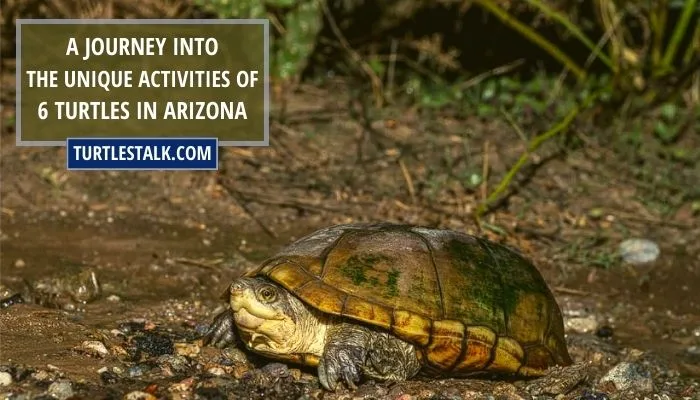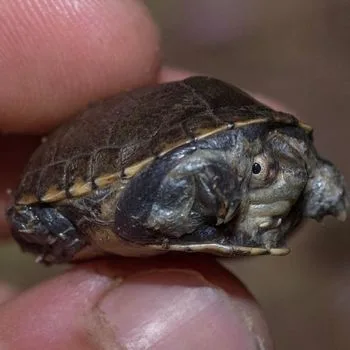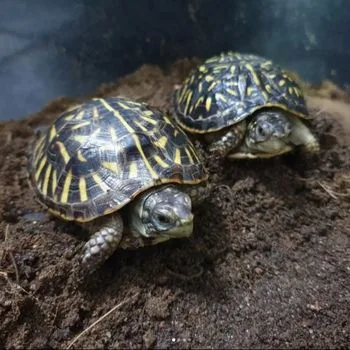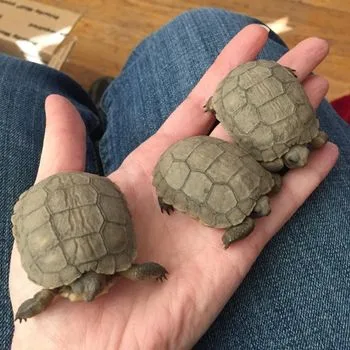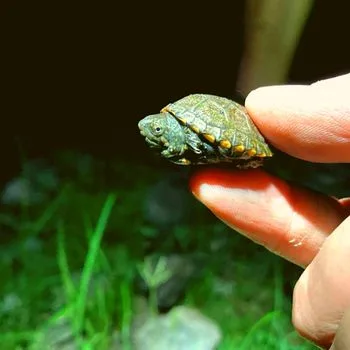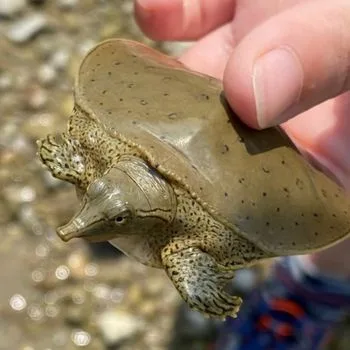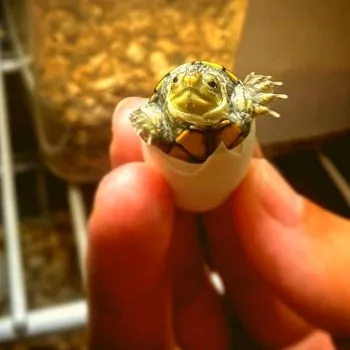A Journey Into the Unique Activities of 6 Turtles in Arizona
Arizona, with its diverse landscape, is a habitat for many species of turtles. From the mud and painted turtles that dwell in the watery habitats to the terrestrial ornate box turtles, these reptiles have adapted to survive in this arid environment.
But Arizona also has some non-native turtle species which were introduced by humans over time. In this article, we will explore all six native species of turtles found in Arizona as well as look at how they have managed to coexist alongside their human counterparts.
| # | Name | Details | Image |
| 1 | Arizona Mud Turtle (Kinosternon Arizonense) |
| 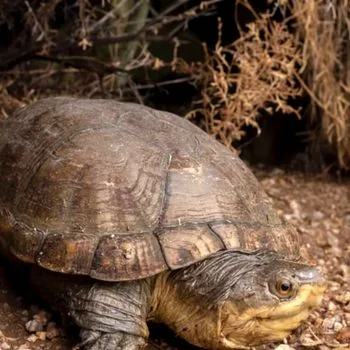 |
| 2 | Desert Box Turtle (Terrapene ornata luteola) |
| 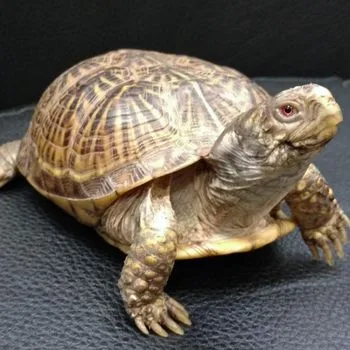 |
| 3 | Desert Tortoise (Gopherus Agassizii) |
| 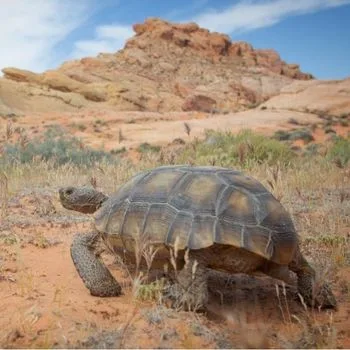 |
| 4 | Sonora Mud Turtle (Kinosternon Sonoriense) |
| 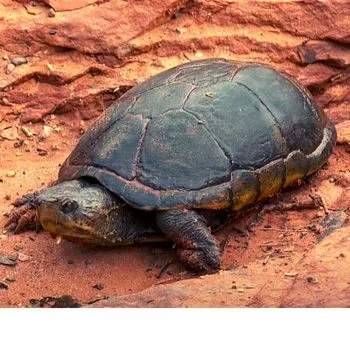 |
| 5 | Eastern Spiny Softshell Turtle (Apalone Spinifera) |
| 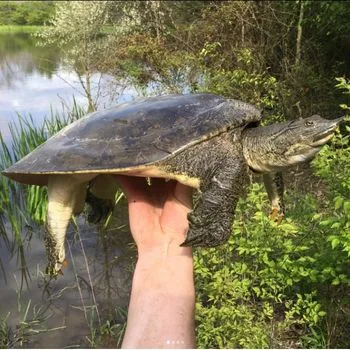 |
| 6 | Yellow Mud Turtle (Kinosternon Flavescens) |
| 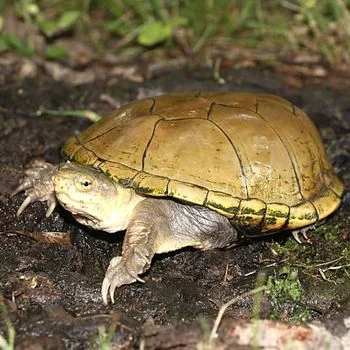 |
6 Turtles You Can Find in Arizona
In total, there are 6 species of turtles in the state of Arizona. This guide will take you on an exploration through each turtle type and provide tips for providing them with proper care. So, let’s get started on our journey into discovering all the wonders that these reptiles have to offer!
1. Arizona Mud Turtle (Kinosternon Arizonense)
- Family: Kinosternidae
- Genus: Kinosternon
- Type: Terrestrial turtle
- Natural Habitat: Still and slow-moving waters such as ponds, marshes, and streams in arid regions of arizona, southwestern new mexico, and northern mexico
- Lifespan: 20-25 years
- Maximum Size: Carapace length of 4-6 inches
- Aggression Level: Relatively docile but may bite if threatened
- Predators: Birds of prey, raccoons, and large fish
- Domestication: Can be kept as a pet
The Arizona Mud Turtle (Kinosternon Arizonense) is a terrestrial turtle native to the arid regions of Arizona, southwestern New Mexico, and northern Mexico. It is found in still and slow-moving waters of Arizona, such as ponds, marshes, and streams.
Adult mud turtles typically reach a carapace length of 4-6 inches with males being slightly smaller than females. This species has adapted well to life in and near water; they are good swimmers and can dive quickly when threatened.
Unfortunately due to habitat destruction, this species may be regulated or restricted in some states like Arizona. Therefore it is important to check local laws before keeping one as a pet.
Predators of this species include birds of prey, raccoons, large fish, and humans; however they are not listed as endangered or threatened. Generally docile but may bite if provoked or startled. They can live up to 20-25 years in the wild when given proper care.
2. Desert Box Turtle (Terrapene ornata luteola)
- Family: Emydidae
- Genus: Terrapene
- Type: Terrestrial turtle
- Natural Habitat: Deserts and arid regions of the southwestern united states
- Lifespan: 20 to 30 years
- Maximum Size: 4-10 inches
- Maximum Weight: 8-16 ounces
- Prone to Diseases: Respiratory infections, shell rot, etc.
- Aggression Level: Low
- Predators: Coyotes, raccoons, skunks, and birds of prey
- Domestication: Can be kept as a pet
The Desert Box Turtle (Terrapene ornata luteola) is a unique and fascinating species of terrestrial turtle native to the deserts and arid regions of the southwestern United States. This turtle that dwells here in Arizona typically ranges from 4-10 inches in size with adult males being larger, weighing 8-16 ounces on average.
These turtles are characterized by their yellow-orange shell patterned with black marks on each scute which may be used as identification markers within certain populations. The Desert Box Turtle has low aggression levels although they have never been known to bite humans but can make good companions for experienced keepers willing to provide them with special care needs here in Arizona.
This species faces potential threats due to human activities such as development and pollution, however it is not currently listed as either threatened or endangered worldwide yet so conservation efforts must be taken before it’s too late so future generations may witness this remarkable species of turtle here in Arizona.
3. Desert Tortoise (Gopherus Agassizii)
- Family: Testudinidae
- Genus: Gopherus
- Type: Terrestrial turtle
- Natural Habitat: Desert and arid environments of the southwestern united states and northwestern mexico
- Lifespan: 80-100 years
- Maximum Size: 14-15 inches
- Maximum Weight: 35 pounds
- Prone to Diseases: Upper respiratory tract disease (urtd), mycoplasmosis, and shell infections
- Aggression Level: Not aggressive
- Predators: Birds of prey, mammals such as coyotes, and reptiles such as gila monsters
- Domestication: Can be kept as a pet
The remarkable Desert Tortoise (Gopherus Agassizii), native to the desert and arid regions of the Southwestern United States and northwestern Mexico, is an intriguing species. With lifespans up to 80-100 years and adult sizes ranging from 14-15 inches in length and 35 pounds in weight, they can be found here in Arizona.
Although not aggressive, they have various predators such as birds of prey, coyotes, Gila Monsters and other mammals. With that said, their status is threatened by human activities like development and livestock grazing which has led to the endangerment of this species in the United States. Fortunately for these reptiles, it is protected by the Endangered Species Act.
However it is illegal to keep them as pets in California and Arizona so please check local regulations before doing so.
Desert Tortoises are prone to diseases such as Upper Respiratory Tract Disease (URTD), mycoplasmosis, as well as shell infections if not properly looked after. They also aren’t well adapted to aquatic environments so need specific care needs when kept in captivity here in Arizona.
In conclusion, Desert Tortoises are unique creatures that call Arizona home but with their endangered status we must do what we can to protect them.
4. Sonora Mud Turtle (Kinosternon Sonoriense)
- Family: Kinosternidae
- Genus: Kinosternon
- Type: Mud turtles
- Natural Habitat: Fields, offshore islands, fresh or brackish water containing marshes, ditches that are wet, and tiny ponds.
- Lifespan: 10+ years
- Also Known As: Sonoyta mud turtle
- Maximum Size: 5 – 7 inches
- Maximum Weight: 10 to 30+ pounds
- Prone to Diseases: Vitamin deficiencies, metabolic bone disease, and intestinal parasites
- Disease Carrier: Salmonella
- Aggression Level: Aggerssive
- Predators: Bullfrogs, large fishes, alligators
- Domestication: Can be kept as pets
The Sonora Mud Turtle (Kinosternon sonoriense) is a small but resilient turtle native to the southwestern United States and northern Mexico. This incredible species lives in desert areas, streams, and ponds with their flattened shells allowing for easy aquatic adaptation.
Adult males usually measure up to 5 to 9 cm (2 to 3.5 in) from head-to-tail and females may appear slightly larger due to their longer shell. Unfortunately, activities such as habitat destruction have placed some populations of this beautiful species at risk of endangerment or even extinction in Arizona.
With adequate protection however there’s hope for them yet – so let us take steps towards preserving these precious creatures! They are not known to be aggressive towards humans, but they do possess unique adaptations that help protect themselves from predators such as snakes or birds of prey by using powerful bites or retreating into their shells when handled unexpectedly.
Although it is illegal own a pet Sonora mud turtle in some states, if you are capable of providing special care and environment they can make fascinating pets too!
5. Eastern Spiny Softshell Turtle (Apalone Spinifera)
- Family: Trionychidae
- Genus: Apalone
- Type: Freshwater turtle
- Natural Habitat: Slow-moving rivers, streams, ponds, and lakes with soft bottoms and abundant aquatic vegetation
- Lifespan: 30 to 40 years
- Maximum Size: 18 inches
- Maximum Weight: 12 lbs
- Prone to Diseases: Respiratory infections, shell rot, and pneumonia
- Aggression Level: Not aggressive, but will bite if threatened
- Predators: Raccoons, alligators, snapping turtles, otters, and larger fish
- Domestication: Not commonly kept as pets
The Eastern Spiny Softshell Turtle (Apalone Spinifera) is an incredible species of freshwater turtle found throughout Arizona. With powerful legs for swimming and a streamlined shell, this impressive creature has adapted to its aquatic environment over millennia. Adults measure between 8-18 inches with males being smaller at 8-12 inches compared to10-18 inches for females, weighing from 4-12lbs respectively. Despite their small size they are surprisingly strong and have a bite force that can put unsuspecting predators on their guard!
Yet these turtles aren’t all aggression; they’re also known to be quite timid and shy when humans appear near them, preferring the safety of rivers, streams or lakes – where plenty of vegetation exists in soft bottomed areas – as habitats. Unfortunately however some populations have declined due to habitat loss or collection for pets so it’s important we do everything in our power to protect these creatures and maintain a healthy ecosystem here in Arizona!
6. Yellow Mud Turtle (Kinosternon Flavescens)
- Family: Kinosternidae
- Genus: Kinosternon
- Type: Freshwater turtle
- Natural Habitat: Found in habitats ranging from slow-moving rivers to permanent ponds, including floodplain swamps and seasonal wetlands.
- Lifespan: 20 – 30+ years
- Maximum Size: 5 – 12 inches
- Maximum Weight: 10 – 35 pounds
- Prone to Diseases: Shell disease
- Disease Carrier: Salmonella
- Aggression Level: Not aggressive
- Predators: Raccoons, alligators
- Domestication: Can be kept as pets
The Yellow Mud Turtle (Kinosternon flavescens) is a remarkable creature, found in habitats ranging from slow-moving rivers to permanent ponds. This freshwater turtle is typically 5 to 12 inches long and can live up to 30 plus years! It has an interesting yellowish shell with black markings on its upper carapace that sometimes feature red or orange hues along the edges; making it stand out among other species of turtles.
Yellow mud turtles are not aggressive creatures, preferring solitude apart from mating season when we often find several males competing for the same female. These reptiles have many predators such as raccoons and alligators who prey on them easily due to their small size and lack of protection against enemies.
Sadly, this species faces endangerment in Arizona due largely to destruction of its habitats which require conservation efforts if we wish future generations will enjoy seeing Yellow Mud Turtles back thriving in nature just like today!
Final Words
In the state of Arizona—a place rich in biodiversity—turtles play a significant role; with a variety of species dwelling in its forests, beaches, and rivers.
In this article, we took a closer look at these fascinating creatures (including their natural habitats, lifespan, size and weight, predators, and domesticability). It’s worth noting that, while keeping these turtles as pets is legal; their populations in Arizona may be declining due to habitat loss and collection for the pet trade.
It is our responsibility to ensure that these turtles remain protected and preserved for future generations to enjoy in the state of Arizona.

